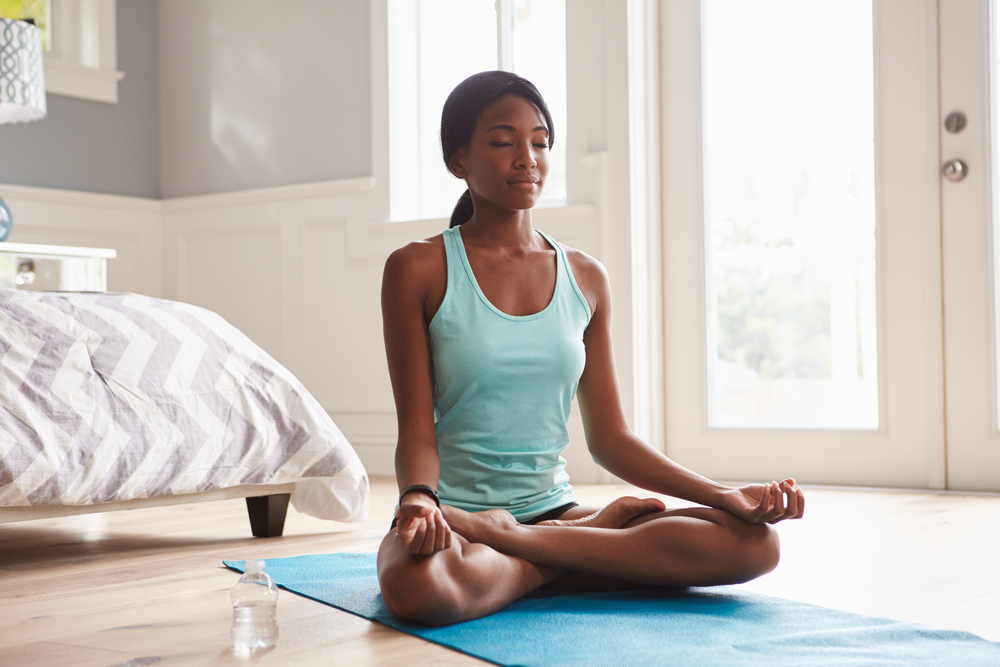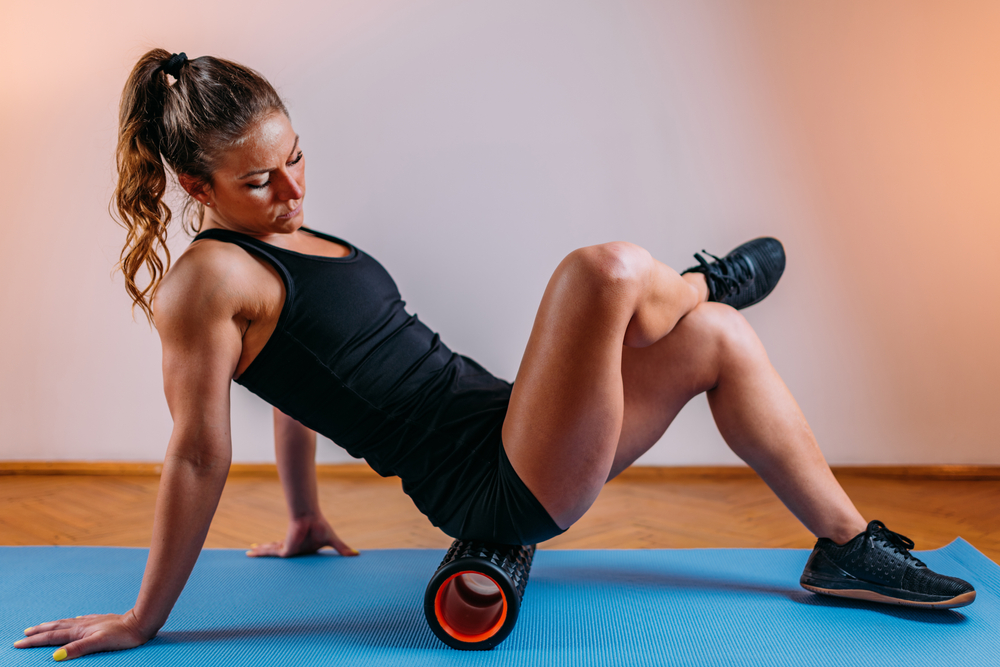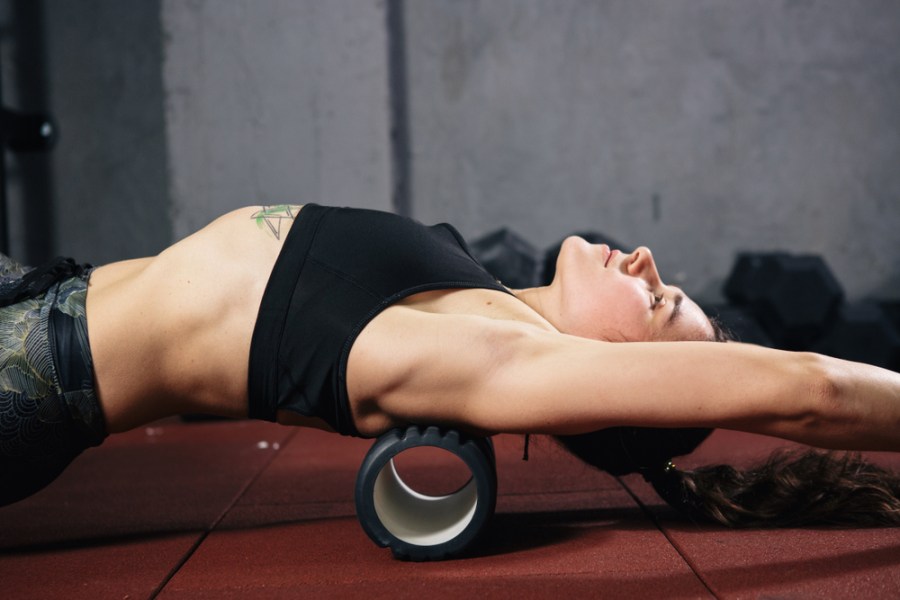Whether you’ve been exercising hard at the gym or at home, you’ll need to recover for the best results. ‘Recovery fitness’ is a popular fitness trend right now. Here’s how to reset with a restorative workout. Words: Sarah Sellens.
After months spent exercising at home and outside, UK gyms opened their doors to members in late July. No matter how eager you are to get fit again, experts warn that a season of scaled-back exercise requires a slow return to activity – and one that incorporates plenty of recovery exercise. ‘Diving straight into intense training, without taking time to rest sore muscles or replenish energy levels, can cause more harm than good,’ says Jo Watson, co-owner of London fitness studio Body Society (bodysociety.co.uk). ‘It can result in overtraining, staling progress and serious injury. To really get the benefits that fitness training brings, it’s important to rest the body.’
Of course, recovery isn’t anything new and chances are you’ve already been resting between workouts, but the focus here is on recovering in an active way – not simply putting your feet up but using your rest day to maximise your bouncebackability. How do you do that? With recovery-focused activities such as foam rolling, restorative yoga, stretching and other low-intensity exercises. ‘There are two main types of recovery – active and passive,’ explains Leanne Hainsby, Peloton cycling instructor (onepeloton.co.uk). ‘Active recovery means being active in a way that supports your body’s recovery, whereas passive recovery is allowing your body to rest. Both types of recovery are important but active recovery is a lighter form of exercise that helps to prepare your body for its next period of heavy training.’
A growing trend
Enter recovery fitness. Already big business in the US, the recovery workout sector was just starting to gain momentum prior to lockdown. Assisted stretching studios StretchLab (stretch-lab.co.uk) and Flexology (flexologystudio.com) opened to members last winter, and the global electronic massage devices market was valued at $15,140 million (over £11,665 million) at the turn of the year. We were even experiencing a boom in restorative classes, something which rivalled the year-on-year popularity of HIIT (High-Intensity Interval Training).
It was so popular that workout subscription service ClassPass (classpass.com) recognised recovery exercise as one of the country’s fastest-growing trends. ‘Prior to the pandemic, recovery fitness was seeing a large boom, with yoga classes proliferating and studios experimenting with stretch workouts,’ agrees Kinsey Livingston, vice president of partnerships at ClassPass. And now that lockdown has eased, recovery exercise is back on the radar. ‘As gyms and studios have reopened in the UK, we’ve seen members tap into the live stream and on-demand classes available on the platform, while also making a return to in-person restorative classes such as Flow+Restore at Yogarise and STRETCHit at Flex.”

The body benefits
The reason for a sudden shift in exercise pace is obvious – as high-intensity interval training (HIIT) and other forms of extreme activity have gained popularity, so has our need for recovery. ‘Working at a different intensity helps speed recovery time from your previous workout by increasing blood flow to your body’s muscle and tissues,’ explains Watson. ‘It helps repair any micro muscle tears [you’ve acquired doing intense exercise] and removes the lactic acid that builds up during exercise, all of which can lead to muscle fatigue and damage.’
Increased participation in endurance sports is also fuelling this sector, as active recovery (exercising at a low intensity) can be a great option for those wanting to add volume to weekly training. ‘If you are training for something specific like a marathon and you need to increase the amount of distance you are running each week, a low intensity run or even walk would allow you to get in the miles without stressing the body too much,’ explains Gus Morrison, senior physiotherapist at the Institute of Sport, Exercise and Health (ISEH).
But it’s not only about physical recuperation, as recovery activity is also great for mental health. ‘Stretching is fantastic for stress relief. Many of our clients come into the studio simply for the opportunity to relax and switch off,’ agrees Kunal Kapoor, founder of StretchLAB. ‘It increases your blood circulation, which can result in mood elevation and relaxation.’
Pandemic recovery
So far, so sensible – but do we really need recovery exercise after months spent doing less or lower-intensity activity in lockdown? Actually, we need it more than ever. ‘The lockdown period has been stressful on both our bodies and minds,’ says Kapoor. ‘An extended period of inactivity and working from home in less-than-ideal set-ups has resulted in stiffness, immobility and general tension. For some people, who’ve had the time to embark on new fitness regimes, the negative impacts have been the same.’
Indeed, data from BUPA reports that 7.2 million exercisers were potentially hurt or injured during lockdown, with those doing online classes, PT sessions, weight training, and using home gym equipment, most likely to report pain. Recovery activity is one way to lower the risk. ‘Stretching is a hugely important tool for injury prevention – something we like to call “prehab”,’ adds Kapoor. And it’s not only for home exercisers but also for those embarking on a return-to-the-gym routine. ‘Stretching between gym sessions allows for quicker recovery, making space for more frequent and effective workouts.’ Turns out, it’s not about how hard you train but about how hard you recover.
Recover your way
There’s more to recovery fitness than a simple stretch! Bounce back from your next hard workout by doing one of these activities between sessions.
Active recovery
Recovery needn’t be complicated. Low-intensity activity will increase your heart rate, sending nutrient-rich blood flowing to tired muscles. ‘Active recovery is loosely defined as low-intensity exercise following a more strenuous workout,’ explains Morrison. ‘Examples of this include cardiovascular exercise such as walking or low-intensity cycling, or very light resistance training such as bodyweight work.’ Try the 20-minute Recovery Rides on the Peloton app (onepeloton.co.uk), which boast low resistance and impact.
Assisted stretching
Very trendy before lockdown, assisted stretch classes involve having a qualified “stretchologist” perform targeted trigger point work and PNF (proprioceptive neuromuscular facilitation) therapy. The net result is an increase in range of motion, flexibility, and a lessening of aches and pains. StretchLAB and Flexology are open to appointments again. There are also instructional home stretching videos available on Instagram @stretchlab.
Myofascial release
Myofascial release therapies work by applying pressure to the fascia, the connective tissue that surrounds the muscle, which releases tightness and improves mobility. It can be done by a qualified expert – a deep tissue massage is an example of a myofascial release therapy – but you can also do it yourself. Self-myofascial release activities include foam rolling or using massage sticks and percussive massage devices such as Theragun.

Restorative yoga
Performing restorative yoga between heavy sweat sessions will help you to get the most out of your workouts, as gentle poses get the blood flowing to tired muscles and induce a relaxation response that jumpstarts recovery. The focus will be on stretching and releasing tension in the mind and body, and it’s not just for hard exercisers. Desk Therapy at fitness studio Strong + Bendy (strongandbendy.co.uk) helps ease tightness caused by office work.
Recovery classes
What better way is there to ensure you stretch than by signing up to a weekly class? “To reap the rewards from your recovery sessions, make them a part of your regular training schedule,’ agrees Amber Gamble, studio manager at F45 Chelsea (F45training.co.uk). ‘We’ve introduced recovery-specific classes, Calypso Kings and Mondrian 30. Calypso Kings works through a variety of different static stretches, while Mondrian 30 incorporates dynamic stretches to improve flexibility.’ You could also try TenStretch classes at Ten Health & Fitness studio or On-Demand.







